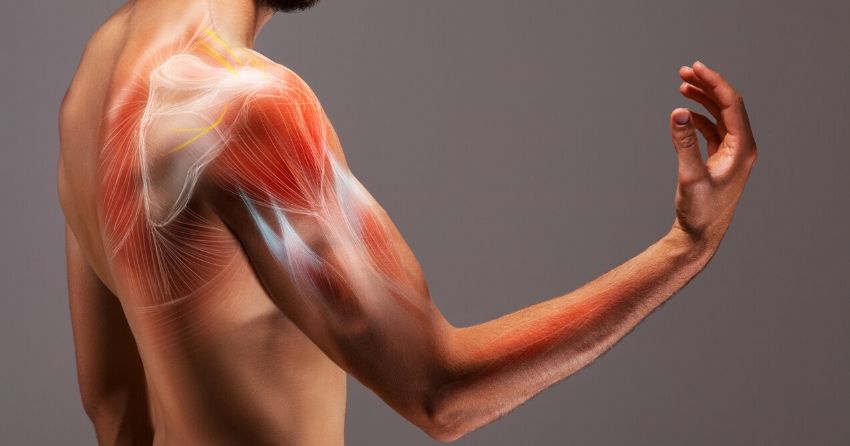Hyaluronic Acid Awakens Stem Cells To Repair Damaged Muscle

-
The natural compound hyaluronic acid—a common ingredient in cosmetics and skincare—may also improve muscle repair.
-
Hyaluronic acid is found to coordinate how stem cells work with immune cells to complete the muscle repair process and ensure the efficient removal of dead tissue before new muscle fibers can be made.
-
The researchers identified hyaluronic acid as the key ingredient in this internal alarm clock that tells muscle stem cells when to wake up.
This article was posted on ScienceDaily.com:
A new study published in the journal Science reveals a unique form of cell communication that controls muscle repair. In damaged muscle, stem cells must work together with immune cells to complete the repair process, yet how these cells coordinate to ensure the efficient removal of dead tissue before making new muscle fibers has remained unknown.
The scientists have now shown that a natural substance called hyaluronic acid, which is used in cosmetics and injections for osteoarthritis, is the key molecule that manages this fundamental interaction.
"When muscles get damaged, it is important for immune cells to quickly enter the tissue and remove the damage before stem cells begin repair," said Dr. Jeffrey Dilworth, senior scientist at The Ottawa Hospital and professor at the University of Ottawa and senior author on the study.
"Our study shows that muscle stem cells are primed to start repair right away, but the immune cells maintain the stem cells in a resting state while they finish the cleanup job. After about 40 hours, once the cleanup job is finished, an internal alarm goes off in the muscle stem cells that allows them to wake up and start repair."
Dr. Dilworth and his team identified hyaluronic acid as the key ingredient in this internal alarm clock that tells muscle stem cells when to wake up. When muscle damage occurs, stem cells start producing and coating themselves with hyaluronic acid. Once the coating gets thick enough, it blocks the sleep signal from the immune cells and causes the muscle stem cells to wake up.
Using mouse and human tissues, Dr. Dilworth and his team also discovered how muscle stem cells control the production of hyaluronic acid using epigenetic marks on the Has2 gene.
"Interestingly, aging is associated with chronic inflammation, muscle weakness and a reduced ability of muscle stem cells to wake up and repair damage," said lead author Dr. Kiran Nakka, a research associate with Dr. Dilworth who conducted this research as part of his postdoctoral studies. "If we could find a way to enhance hyaluronic acid production in the muscle stem cells of older people it might help with muscle repair."
The authors note that the regenerative effect of hyaluronic acid seems to depend on it being produced by the muscle stem cells. The team is currently examining if drugs that modify the epigenetics of muscle stem cells could be used to increase their production of hyaluronic acid.
Story Source:
Materials provided by The Ottawa Hospital. Note: Content may be edited for style and length.
Journal Reference:
- Kiran Nakka, Sarah Hachmer, Zeinab Mokhtari, Radmila Kovac, Hina Bandukwala, Clara Bernard, Yuefeng Li, Guojia Xie, Chengyu Liu, Magid Fallahi, Lynn A. Megeney, Julien Gondin, Bénédicte Chazaud, Marjorie Brand, Xiaohui Zha, Kai Ge, F. Jeffrey Dilworth. JMJD3 activated hyaluronan synthesis drives muscle regeneration in an inflammatory environment. Science, 2022; 377 (6606): 666 DOI: 10.1126/science.abm9735





